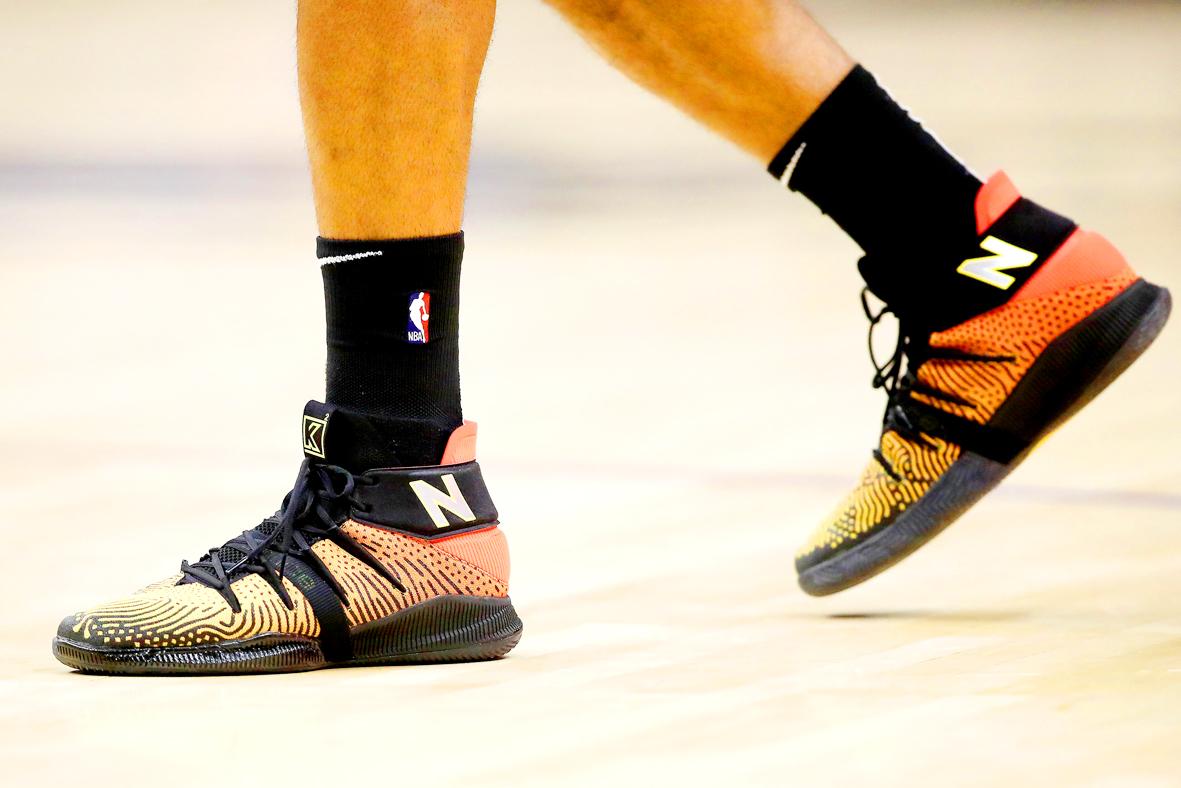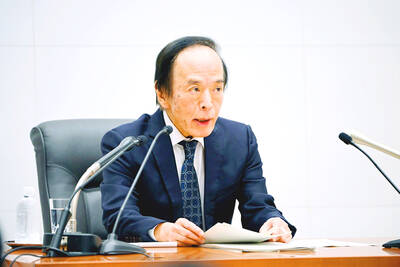Pou Chen Corp (寶成工業), the world’s largest maker of sports shoes, apparel and accessories, is mulling pay cuts and furloughs for its Taiwanese employees as orders slump amid the COVID-19 pandemic.
The Taichung-based company — whose clients include Nike Inc, Adidas AG, Puma AG, New Balance Athletic Shoe Inc and Timberland Co — is contemplating temporary pay cuts of 10 percent, furloughs and other cost-saving measures that would affect 3,000 employees in Taiwan and officials based in overseas factories.
Pou Chen spokesman Ho Ming-kun (何明坤) told reporters that the firm has not made a final decision, as it requires the consent of its workers’ union and the government.

Photo: AFP
The 51-year-old company is seeking to furlough employees for six days per month for three months, which might be extended depending on how the pandemic pans out, Ho said.
“It is better to be furloughed than laid off” in hard times, local Chinese-language media quoted Pou Chen employees as saying after a meeting with officials about the issue on Monday night.
Pou Chen’s first-quarter revenue tumbled 22.4 percent year-on-year to NT$59.46 billion (US$1.98 billion), the weakest in six years, company data showed.
Orders have reportedly plummeted 50 percent in the current quarter, with little visibility beyond, analysts said.
Nike, Adidas and other international sports brands have shut down retail outlets in the US, Europe and elsewhere to support social distancing orders by governments around the world to curb the spread of the virus, analysts said, adding that indefinite suspensions of major sports events have compounded the problem.
The company’s original equipment manufacturing (OEM) business for major footwear brands reported that sales declined by up to 16.4 percent year-on-year in the first two months of this year, Yuanta Securities Investment Consulting Co (元大投顧) said in a note earlier this month.
“Pou Chen’s OEM shoe sales volume was 322.4 million units in 2019, down 1.1 percent year-on-year,” Yuanta said. “Given that 60 percent of its OEM shoe business is from the EU and US markets, which will likely be impacted by COVID-19 in the first half of 2020, we estimate its OEM shoe business sales would fall by up to 10 percent year-on-year this year.”
The proposed 10 percent pay cuts would apply to employees and officials, including CEO Tsai Pei-chun (蔡佩君), daughter of the company’s founder, Tsai Chi-jui (蔡其瑞), media reports said.
It would be the first time Pou Chen had invoked such measures to stay afloat, and it said it hoped employees would understand and help the company survive the crisis. Pou Chen employs 350,000 workers at factories in China, Vietnam and Indonesia.
Operations in overseas markets are not covered by the belt-tightening scheme, local media said.
Shares of Pou Chen yesterday fell 5.54 percent to NT$27.30 in Taipei trading, underperforming the broader market’s 2.82 percent decline, Taiwan Stock Exchange data showed.
Earlier, the firm’s Vietnamese unit, Pouyuen Vietnam Co, suspended production for two days after failing to meet local rules on social distancing to curb the outbreak.

Taiwan’s long-term economic competitiveness will hinge not only on national champions like Taiwan Semiconductor Manufacturing Co. (TSMC, 台積電) but also on the widespread adoption of artificial intelligence (AI) and other emerging technologies, a US-based scholar has said. At a lecture in Taipei on Tuesday, Jeffrey Ding, assistant professor of political science at the George Washington University and author of "Technology and the Rise of Great Powers," argued that historical experience shows that general-purpose technologies (GPTs) — such as electricity, computers and now AI — shape long-term economic advantages through their diffusion across the broader economy. "What really matters is not who pioneers

In a high-security Shenzhen laboratory, Chinese scientists have built what Washington has spent years trying to prevent: a prototype of a machine capable of producing the cutting-edge semiconductor chips that power artificial intelligence (AI), smartphones and weapons central to Western military dominance, Reuters has learned. Completed early this year and undergoing testing, the prototype fills nearly an entire factory floor. It was built by a team of former engineers from Dutch semiconductor giant ASML who reverse-engineered the company’s extreme ultraviolet lithography (EUV) machines, according to two people with knowledge of the project. EUV machines sit at the heart of a technological Cold

TAIWAN VALUE CHAIN: Foxtron is to fully own Luxgen following the transaction and it plans to launch a new electric model, the Foxtron Bria, in Taiwan next year Yulon Motor Co (裕隆汽車) yesterday said that its board of directors approved the disposal of its electric vehicle (EV) unit, Luxgen Motor Co (納智捷汽車), to Foxtron Vehicle Technologies Co (鴻華先進) for NT$787.6 million (US$24.98 million). Foxtron, a half-half joint venture between Yulon affiliate Hua-Chuang Automobile Information Technical Center Co (華創車電) and Hon Hai Precision Industry Co (鴻海精密), expects to wrap up the deal in the first quarter of next year. Foxtron would fully own Luxgen following the transaction, including five car distributing companies, outlets and all employees. The deal is subject to the approval of the Fair Trade Commission, Foxtron said. “Foxtron will be

INFLATION CONSIDERATION: The BOJ governor said that it would ‘keep making appropriate decisions’ and would adjust depending on the economy and prices The Bank of Japan (BOJ) yesterday raised its benchmark interest rate to the highest in 30 years and said more increases are in the pipeline if conditions allow, in a sign of growing conviction that it can attain the stable inflation target it has pursued for more than a decade. Bank of Japan Governor Kazuo Ueda’s policy board increased the rate by 0.2 percentage points to 0.75 percent, in a unanimous decision, the bank said in a statement. The central bank cited the rising likelihood of its economic outlook being realized. The rate change was expected by all 50 economists surveyed by Bloomberg. The